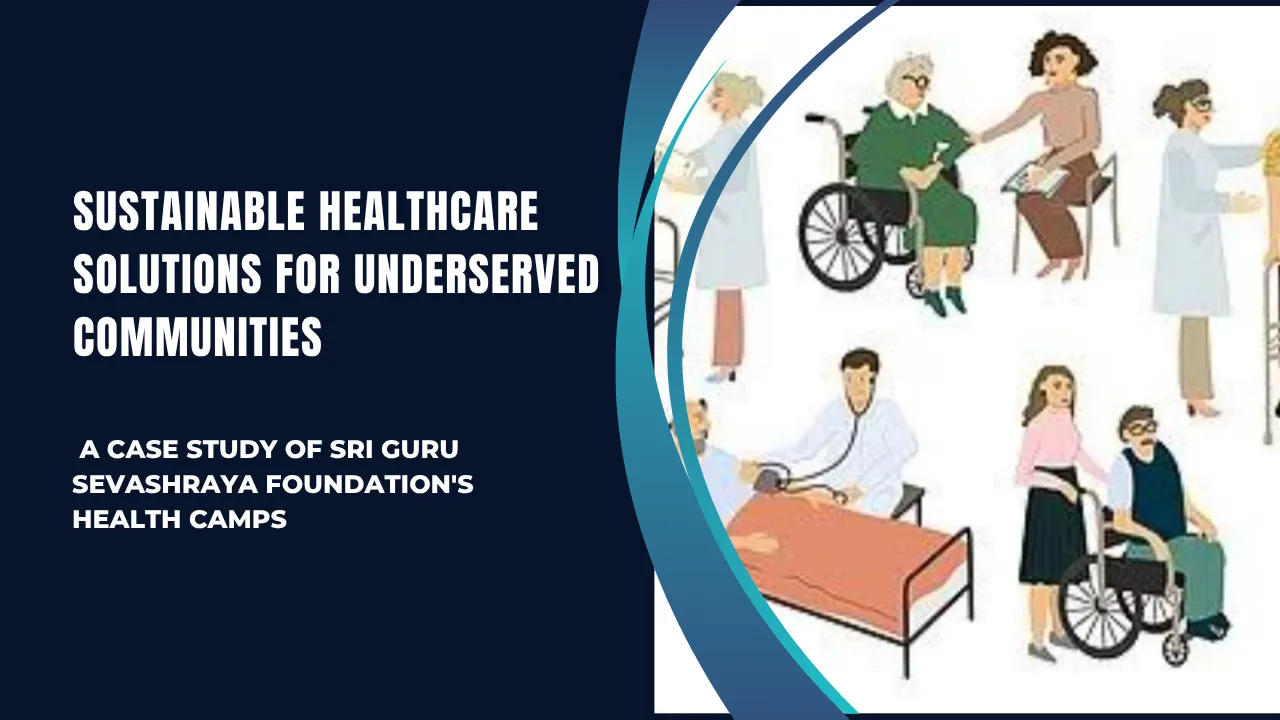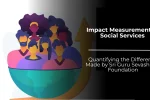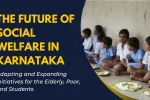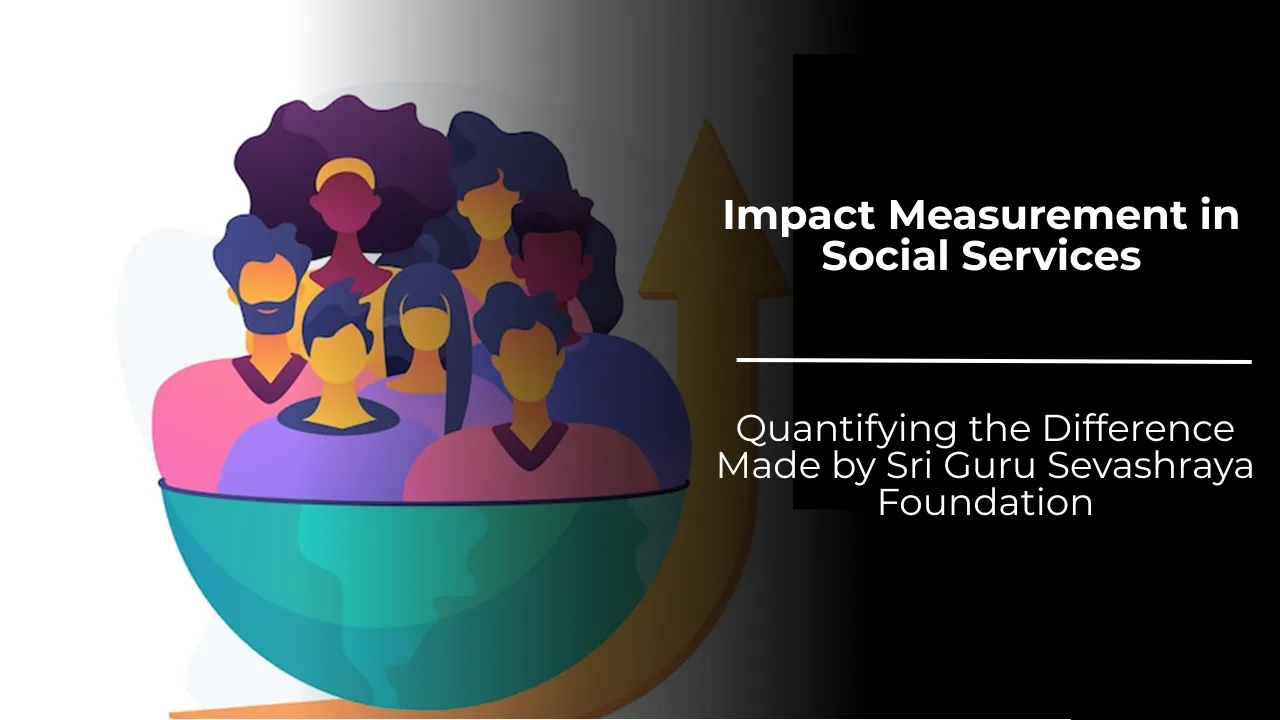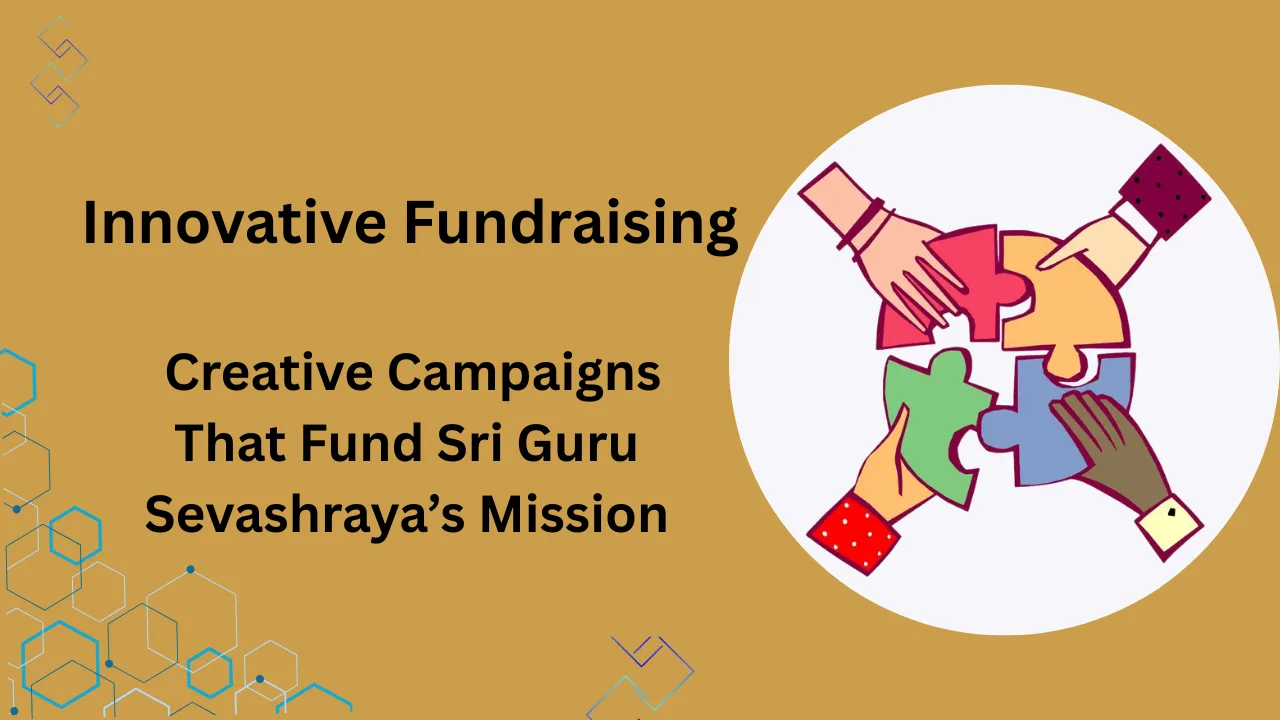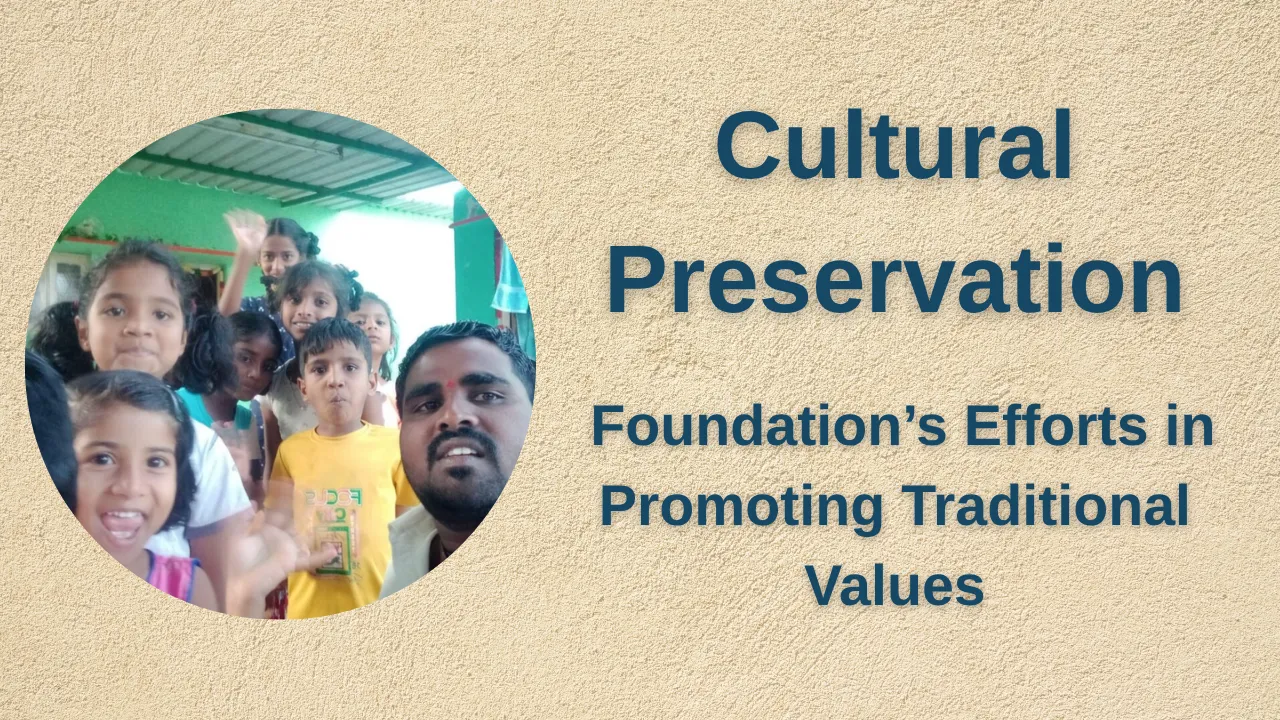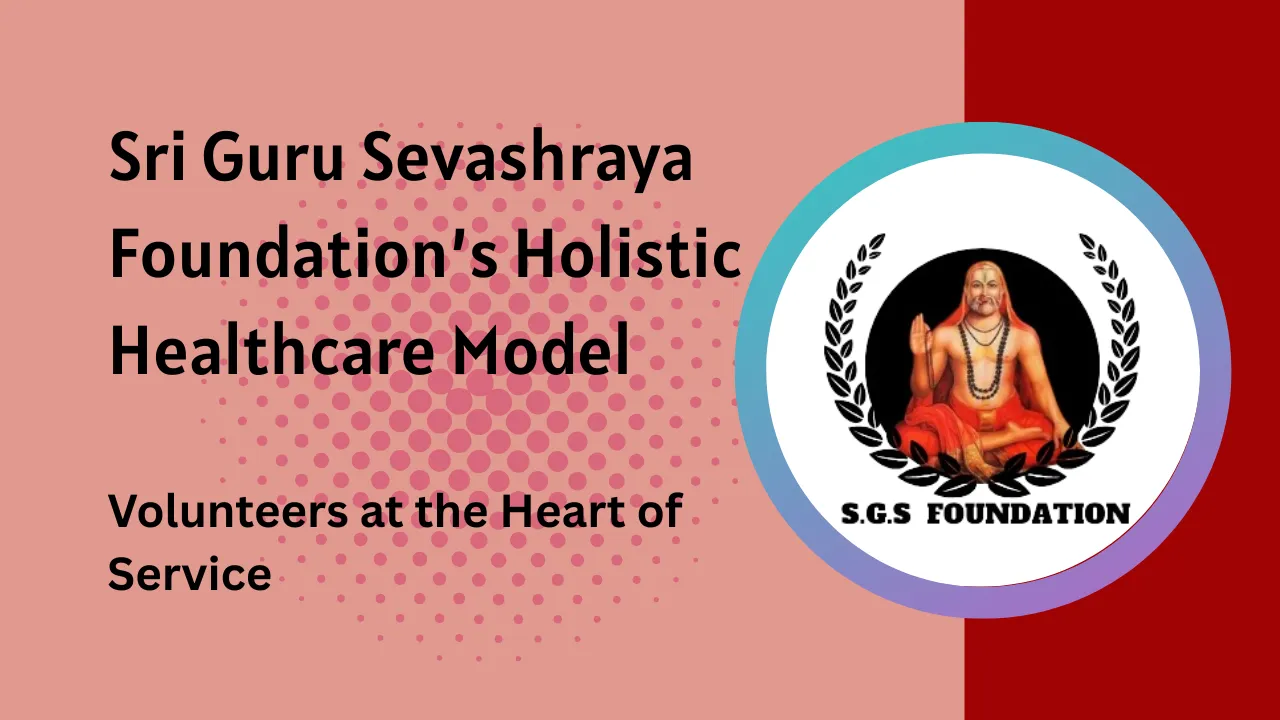Sustainable Healthcare Solutions for Underserved Communities: In rural pockets around Bangalore, villagers often struggle to access basic healthcare. Patients walk long distances, delay treatment, and succumb to preventable diseases. Addressing this gap, SRI GURU SEVASHRAYA FOUNDATION has introduced a series of SRI GURU SEVASHRAYA FOUNDATION Health Camps aimed at bringing quality medical care directly to those who need it most. Rooted in prevention, community engagement, and affordability, these camps are transforming the local healthcare landscape.
The SRI GURU SEVASHRAYA FOUNDATION Health Camps focus on accessible check-ups, targeted eye care services, and community-wide awareness. By blending professional screenings with follow-up pathways and educational outreach, the program goes beyond charity—it builds a blueprint for sustainable rural healthcare.
SRI GURU SEVASHRAYA FOUNDATION Health Camps
SRI GURU SEVASHRAYA FOUNDATION Health Camps serve as critical pillars of rural healthcare outreach in Bangalore’s underserved regions. These camps go far beyond routine check-ups. They deliver comprehensive services, including free medical consultations, general health screenings, eye care with vision restoration surgeries, blood donation drives, and awareness programs. What sets these camps apart is their focus on both immediate relief and sustainable health outcomes. Residents not only receive prompt medical attention but also gain knowledge that empowers them to take control of their health in the long term. By consistently addressing local health gaps and involving community participation, SGSF’s health camps exemplify how structured volunteer-led models can bring lasting change to rural health infrastructure.
Overview Table
| Camp Component | Description |
| General Health Screenings | Blood pressure, diabetes tests, initial diagnosis of common ailments |
| Eye Care Camps | Free vision tests, glasses, and corrective cataract surgeries |
| Blood Donation Drives | Community awareness and donor mobilization |
| Preventive Health Education | Informal sessions covering hygiene, chronic disease prevention |
| Volunteer & Professional Teams | Medical professionals, local volunteers, and paramedics collaborating |
The Importance of Rural Health Camps
In India’s rural areas, health camps serve four vital functions:
- Bridging Access Gaps – They bring care to villages where infrastructure is minimal.
- Early Detection – Routine screenings help diagnose hypertension, diabetes, and other chronic illnesses early.
- Disease Prevention – Awareness sessions encourage healthier habits and prompt follow-up treatment.
- Cost Efficiency – Delivered free or at low cost, these camps eliminate financial barriers for vulnerable families. (en.wikipedia.org, pmc.ncbi.nlm.nih.gov, en.wikipedia.org)
Reach and Services
SRI GURU SEVASHRAYA FOUNDATION Health Camps operate in rural Bangalore districts like Doddaballapur. Hundreds attend each camp, benefiting from:
- General Check‑ups: Measurements of blood sugar, pressure, and health evaluations for early condition tracking.
- Eye Care: Screenings for cataracts and refractive errors, with corrective surgeries organized through trusted partner hospitals. This restores vision and independence.
- Blood Donation: Inclusive donor drives that support regional hospitals, fostering health awareness and civic responsibility.
Effectiveness: Short and Long-Term Outcomes
Early Detection
Many conditions are caught before complications arise—vital in slowing disease progression.
Access & Equity
Rural residents receive care that would otherwise be inaccessible, reducing the need for expensive travel.
Focused Eye Care
Cataract surgeries transform lives—restored sight leads to improved mobility, social interaction, and economic self-sufficiency. (timesofindia.indiatimes.com, iapb.org)
Health Education
Simple advice on hygiene or disease management empowers communities to take control of their health.
Sustainability and Strategic Design
Key elements of sustainability include:
- Education Focus: Camps include counseling on chronic conditions, hygiene, and disease prevention—laying groundwork for lasting change.
- Community Involvement: Blood drives and volunteer participation ensure local ownership, vital for continued impact. (researchgate.net)
- Medical Collaboration: Partnerships with doctors, skilled volunteers, and hospitals keep costs manageable and ensure quality. Professional involvement boosts credibility and follow-through.
- Targeted Treatments: Services like cataract correction highlight strategic prioritization—dramatic individual benefits build community trust.
- Referral Networks: Healthy camp models link patients to hospitals for advanced care. Digital record-keeping could strengthen these pathways further.
Measurable Community Impact
While specific SGSF outcome data is private, comparable camp models often show:
- Reduced Disease Burden – Early detection prevents severe complications.
- Improved Vision – Cataract operations restore sight and mobility.
- Lowered Medical Costs – Free screenings reduce financial strain for families.
- Behavioral Change – Community knowledge translates into preventive hygiene and treatment-seeking.
Lessons for a Scalable Model
SGSF’s model offers valuable lessons:
- Local Host Sites – Village spaces reduce travel barriers.
- Integrated Services – Bundling general screenings, eye care, and camps increases value.
- Volunteer-Driven – Engaging local health professionals keeps costs low and builds local capacity.
- Education-Centric – Half the battle is informing and empowering, not just treating.
- Referral Flow – Suicide linking camps to full-scale hospitals ensures continuity beyond one-off events.
Challenges and Opportunity Areas
Sustainable expansion will need to overcome:
- Chronic Follow-Up – Systems to track disease-managed patients over time are essential.
- Data Tracking – A simple digital registry per patient helps monitor long‑term health outcomes.
- Funding Diversification – Partial fees or local partnerships could support growth.
- Enhanced Infrastructure – Mobile units or deeper community health worker engagement would extend coverage.
Conclusion
The SRI GURU SEVASHRAYA FOUNDATION Health Camps deliver more than healthcare—they restore dignity. By blending prevention, service, education, and empathy, SGSF demonstrates how carefully crafted health camps can produce lasting impact. In rural India, where many go untreated, such interventions are lifelines, uplifting individuals and communities alike.
Call to Action
Healthcare professionals, NGOs, and local leaders: learn from SGSF’s health camp model. Whether through partnership, volunteerism, or funding, you can help replicate sustainable healthcare solutions in other underserved areas. Support education, screening, and treatment to expand SGSF’s reach and restore health with lasting compassion.
FAQs
1. What services do SGSF Health Camps offer?
They provide general check-ups, diabetes/hypertension screenings, vision tests, cataract treatments, and blood donation drives—all free and accessible.
2. Who benefits from these camps?
Rural and low-income residents, in particular the elderly and those facing chronic illness or preventable vision loss.
3. How often are camps held?
Typically, SGSF organizes annual or semi-annual health camps in rural districts, covering hundreds per event.
4. Are follow‑up treatments provided?
Yes—cataract surgery and ongoing care are arranged via hospital referrals; other conditions are directed to local clinics.
5. Can communities replicate this model elsewhere?
Absolutely. The core strategy—combining screenings, eye care, education, and volunteer participation—is adaptable to many underserved rural settings.
By grounding healthcare in compassion and community, the Sri Guru Sevashraya Foundation creates not just healthier lives—but more hopeful futures.
